How far can a dog run into the woods? This is a question that many pet owners have, and it’s not always an easy one to answer. Dogs are curious creatures, and they love to explore their surroundings. This means that there is a good chance that your dog will want to run into the woods at some point. In this article, we will provide you with the answers to some common questions about dogs running in the woods, as well as some tips on how to keep your pet safe.
Why Do Dogs Run Into The Woods?
Dogs are natural explorers and they love to explore their environment. Running into the woods is a great way for them to do just that. Dogs may also be running after something they see or smell, like another animal or an interesting scent. They could even be chasing something they consider a threat. Ultimately, when your dog runs into the woods it’s usually because they’re curious and want to investigate what’s out there! [1]
What Kind Of Dogs Usually Run Into The Woods?
The kind of dog that usually runs into the woods is typically a breed that was bred to hunt, such as a Labrador Retriever, German Shepherd, or Beagle. Dogs with strong hunting instincts and plenty of energy may be more inclined to run into the woods as they will naturally want to explore their environment. [1]
Should I Be Comfortable Allowing My Dog To Run Into The Woods?
Yes, you should be comfortable allowing your dog to run into the woods, as long as proper precautions are taken. Make sure that your dog is up-to-date on their vaccinations, has a collar and tags with contact information, and is wearing a tracking device such as a GPS collar or beacon. Additionally, it’s important to stay with your pet or have them supervised at all times. This will help ensure that they don’t get lost or hurt in the unfamiliar surroundings of the woods. [1]
Age Of The Dog
The age of a dog is important to consider when trying to determine how far it can run in the woods. Younger dogs tend to have more energy and enthusiasm, so they may be able to run further than older dogs. Dogs over one year old can usually cover longer distances because their bodies are better able to handle the physical demands of running. However, puppies should not be taken into the woods for long runs as their growing bones need extra protection from any accidental falls or slips that could occur while out on a hike. It’s also important to make sure your pup takes regular breaks when running in the woods, since their muscles may become tired quicker than those of adult dogs due to their smaller size. [1]
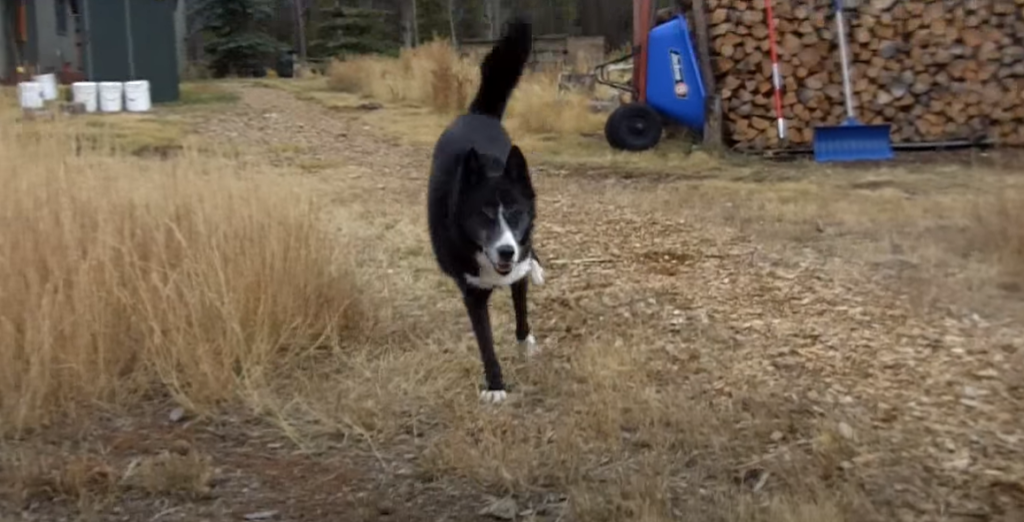
The Safety Of Your Dog
Your dog’s safety should always come first when considering how far they can run in the woods. It is important to consider the terrain, weather conditions, and any potential hazards your pet may encounter while running in the wilderness. Ensure that you bring a leash at all times and keep your pup on it if necessary. Additionally, make sure your furry friend has plenty of access to water for hydration during their outdoor adventures. [1]
The Size Of Your Dog
When it comes to how far a dog can run into the woods, size matters. Larger dogs tend to be able to run further and faster than smaller dogs. This is because larger breeds have more energy, strength and stamina for running long distances. Also, small dogs may find it harder to navigate through thick underbrush or over obstacles in the woods that bigger dogs can easily manage.
If your dog is an athletic breed that has been bred for running, such as a Greyhound or Labrador retriever, they will likely be able to run farther than other breeds. It’s important to take into account both the size and breed of your dog when considering how far it can run into the woods. [1]
What Are The Dog Breeds Most Suited For Running In The Woods?
German Shepherds
German Shepherds are some of the most versatile and active dog breeds, making them a great choice for running in the woods. They’re strong and agile, able to cover a lot of ground quickly and with ease. Their thick coats protect them from thorns and other obstacles which can be found in wooded areas. Plus, they have a high threshold for pain which allows them to push through difficult terrain without getting hurt or fatigued easily. These traits make German Shepherds an excellent option for canine trail-running adventures! [1]
Black Labrador
The Black Labrador is another popular breed for running in the woods. They’re known to have an incredibly powerful drive, so they can keep up a good pace while exploring trails in the woods. Plus, they have a strong sense of smell which can help them pick out interesting scents and lead them on new adventures. Black Labradors are also very resilient and can cope with difficult terrain without getting hurt or exhausted quickly. [1]
Border Collies
Border Collies are one of the smartest breeds around, and this makes them great athletes for running in the woods! Their intelligence gives them problem-solving skills that come in handy when navigating difficult terrain or unfamiliar paths. They’re also highly energetic and motivated, so they can keep up a good pace for longer distances. Plus, Border Collies have an impressive agility and strength that makes them more than capable of handling challenging terrain. [1]
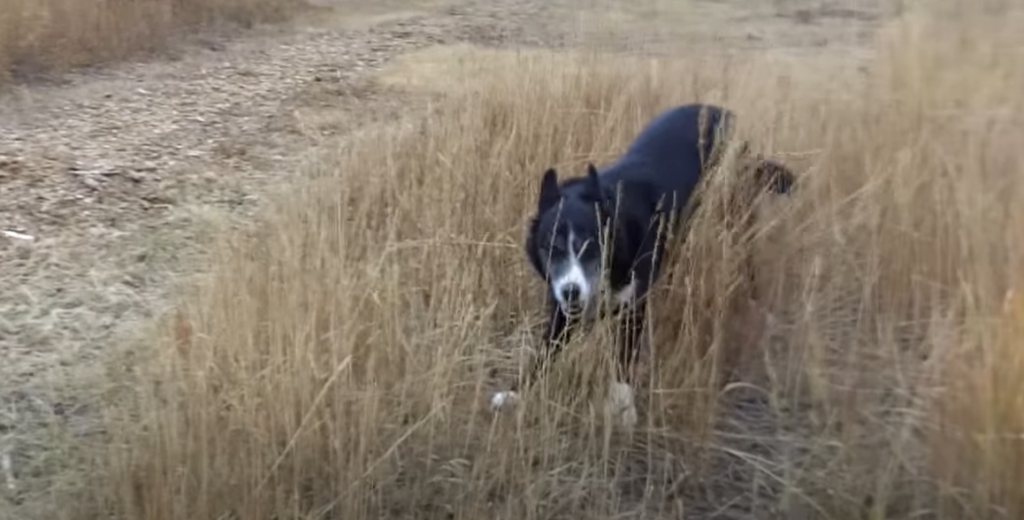
What Should I Do During The Run?
Study His Body Language
Once you’ve decided on a route to take, it’s important to pay close attention to your pup during the entire run. Make sure that he doesn’t overdo it when exercising in the woods. Take regular breaks, and watch for signs of exhaustion or overexertion such as excessive panting or drooling, staggering, or lying down. If you notice any of these symptoms, don’t hesitate to take him back home for rest and hydration. [1]
Ensure that you take along plenty of water to keep your pup hydrated during the run. Taking regular water breaks will also give him a chance to cool off and help prevent heat stroke or dehydration. You may want to bring an additional bowl as well, since there could be streams or bodies of water in the woods that are not safe for him to drink from. [1]
Protection
The woods are full of potential hazards, so make sure that your pup is well protected against anything that could hurt him. A collar or harness with a leash is essential for keeping him safe and under control during the run. If you’re worried about insects, you can also consider applying insect repellent to his fur to protect against ticks and other bugs. Additionally, bear in mind any wildlife that might be present in the area and take precautions accordingly. [1]
How to find a dog lost in the forest?
Call the vets and shelters
If your dog is lost in the woods, call nearby animal shelters and veterinary clinics to see if anyone has seen or found your pet. You can also check online forums and social media pages to reach out to people who may have spotted or taken in a missing pup. [2]
Start the search
Once you get the lay of the land and understand where your pet may have gone, start searching the area. If possible, enlist the help of friends and family or even local wildlife experts who can provide advice on how to best traverse through a specific forest. Bring a few snacks for yourself and your dog in case you find him or her in need of sustenance. [2]
Be calm
Even if you think time is of the essence, try to remain calm and patient during your search. Make sure to call out your dog’s name in a gentle, soothing voice as this will make it easier to spot him or her from afar. Additionally, take periodic breaks throughout the day so you can rest up and be fully alert when looking for your pup. [2]
Put up posters
In case your dog has gone missing, put up posters in the surrounding area with a clear photo of your pet and details on how to contact you. This can help alert people who may have seen or picked up your pup and provide extra incentives (such as rewards) for those willing to come forward with any information they may have. [2]
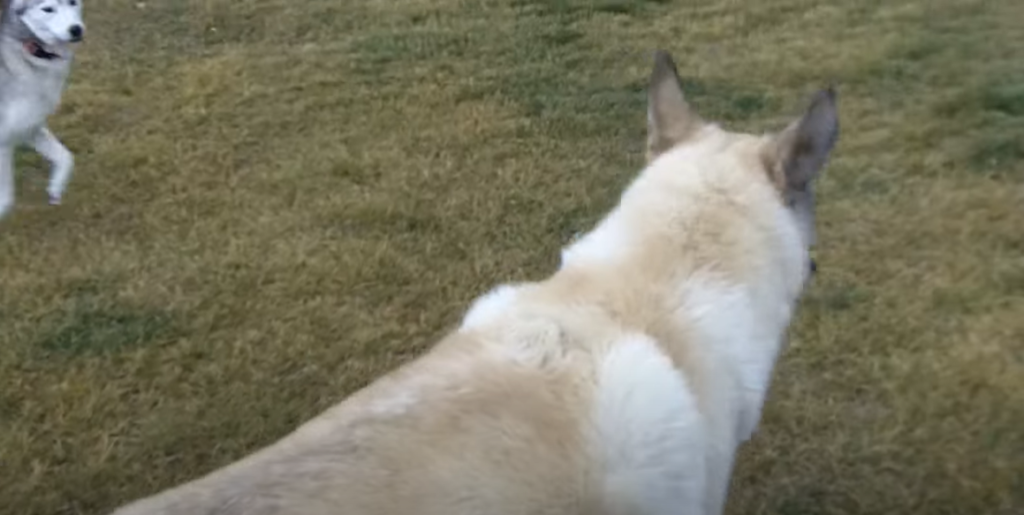
Leave your scent
Consider leaving your scent on a piece of clothing, such as a shirt or pair of socks. This can help attract the attention of your dog and make it easier for him or her to find the way back home. You can also leave out food and water dishes in specific areas near where your pup was last seen. [2]
Cook up some yummy food
If you know your pet loves a certain type of food, consider making some delicious treats for him or her. The scent can attract and lure your pup out of the woods. And if all else fails, never give up and keep searching until you find your beloved companion! [2]
Check on water sources
Water sources such as rivers, ponds, and lakes are great spots to search. Consider looking around these areas for your pup as he or she might be drawn to the sound of running water. However, always take extra caution when searching in or near water sources, as the terrain can be tricky and hazardous. [2]
What Are The Safety Tips I Should Consider Before My Dog Runs Into The Woods?
Check Up
Before you take your dog out into the woods, make sure they’re up to date on all their vaccinations. Your vet will know what your pup needs, so it’s best to consult them first. Also, check with your veterinarian to ensure that your pet has no health conditions or special needs that could be affected by an extended run in the woods. [1]
Go Slow
Your pup shouldn’t run full speed when you take them into the woods. Start out slow, with a leisurely walk through the trees. This allows your dog to get acclimated to the environment and adjust their pace accordingly. As they become more accustomed to the terrain, you can gradually increase their running speed. [1]
A Little Warm-Up
Just like with humans, a warm-up is important before any exercise. Before you take your pup out on the trail, let them have time to explore their surroundings and get themselves mentally and physically prepared for an extended jog. [1]
Do Not Allow Your Dog To Pull You
When running in the woods, your dog may be tempted to pull you along. This can cause dangerous accidents and put undue strain on both of you. Make sure to keep your pup’s leash short enough that they won’t be able to pull you off balance or make sudden jerky movements. [1]
Reward Them
Like humans, dogs need to be rewarded for their efforts. Make sure to bring treats along with you for your pup so that they can get a snack and some positive reinforcement after the run. This will help encourage them to keep up the good work! [1]
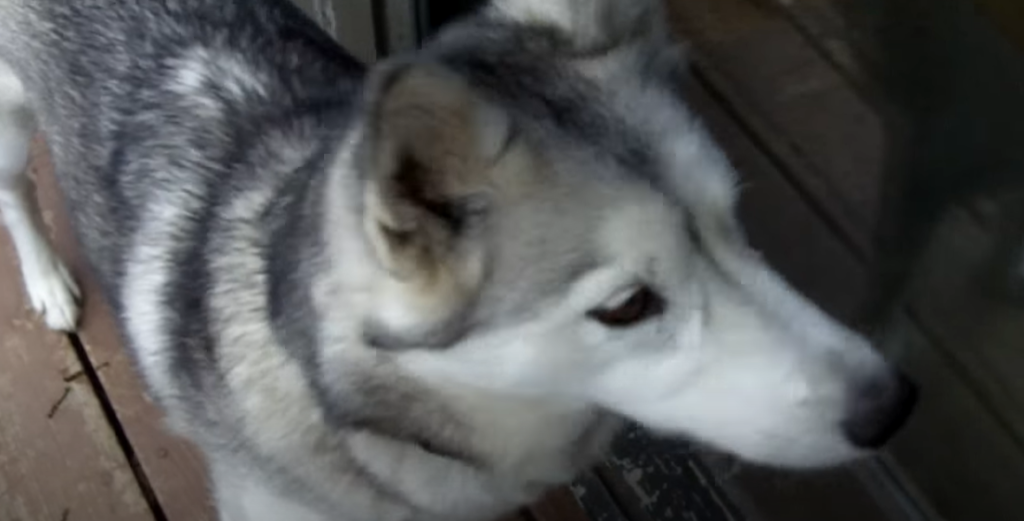
FAQ
Can a dog get lost in the woods?
Yes, a dog can get lost in the woods. Dogs have an excellent sense of smell and can pick up on scents that lead them away from home, so they need to be supervised while in the woods. Make sure you keep your pet on a leash or under voice control at all times, and if you must let it off-leash, stay close by so you can intervene if necessary.
How far can a dog run?
This depends on the breed, age and physical condition of your pet. Generally, an adult dog in good physical shape can run up to three miles without needing a rest break. It’s important to limit the distance and time spent running so you don’t tire out your pup or risk it becoming lost or injured. If you plan on taking your dog on a longer run, it’s best to gradually increase the distance at each outing.
How far can a dog run without a break?
This again depends on the breed and physical condition of your pet. A healthy, adult dog can typically run three miles without needing a break, but it’s best to keep the distance shorter if you’re taking your pup on their first outing. To avoid overexertion, limit running time to twenty minutes or less and make sure to provide plenty of rest breaks.
How far will a dog wander off?
Most dogs will wander off only as far as their sense of smell can take them. They may wander a few hundred yards to investigate an interesting scent, but they usually won’t venture too far away from home. Keeping your pet on a leash or under voice control while in the woods is still a good idea, just in case it gets distracted and runs off.

What dog breed can run the longest?
There’s no one breed that can run the longest, as each has its own unique physical attributes. Some of the breeds best known for their endurance and running abilities include Greyhounds, Huskies, Pit Bulls, Australian Cattle Dogs, Labrador Retrievers and Pointers. Your pup’s individual capabilities will depend on its age, size, and overall physical condition.
What dog has the best stamina?
Most of the dog breeds mentioned above – Greyhounds, Huskies, Pit Bulls, Australian Cattle Dogs, Labrador Retrievers and Pointers – possess great stamina. That said, any healthy pup can build up their endurance with regular exercise and a balanced diet. As your pet grows used to running in the woods, you’ll be able to increase the distance and time spent running without worrying about it becoming overly tired.
What is the fastest dog on earth?
The fastest dog on earth is the Greyhound, which can reach speeds of up to 45 mph (72 km/h). That said, other breeds like the Vizsla and Rhodesian Ridgeback are also capable of reaching impressive speeds when given enough space to run.
How much running is too much for a dog?
It’s best to start with shorter runs and gradually increase the distance over time. Most adult dogs can handle up to three miles without needing a break, but keep an eye on your pup for any signs of fatigue or discomfort. If it’s panting heavily, slowing down or refusing to move forward, stop the run immediately and give it some rest.
Useful Video: How far can Buzz run into the woods
Conclusion
So, how far can a dog run into the woods? It really depends on both the breed and physical condition of your pup. Long-distance breeds like huskies or border collies may be able to go much farther than short-legged dogs like dachshunds or corgis. Your pup’s age and energy level also come into play. But in general, most dogs can run up to several miles in the woods without getting lost or tiring out too quickly.
References:
- https://oxfordpets.com/how-far-can-a-dog-run-into-the-woods/
- https://petcosset.com/how-far-can-a-dog-run-into-the-woods/#check-on-water-sources





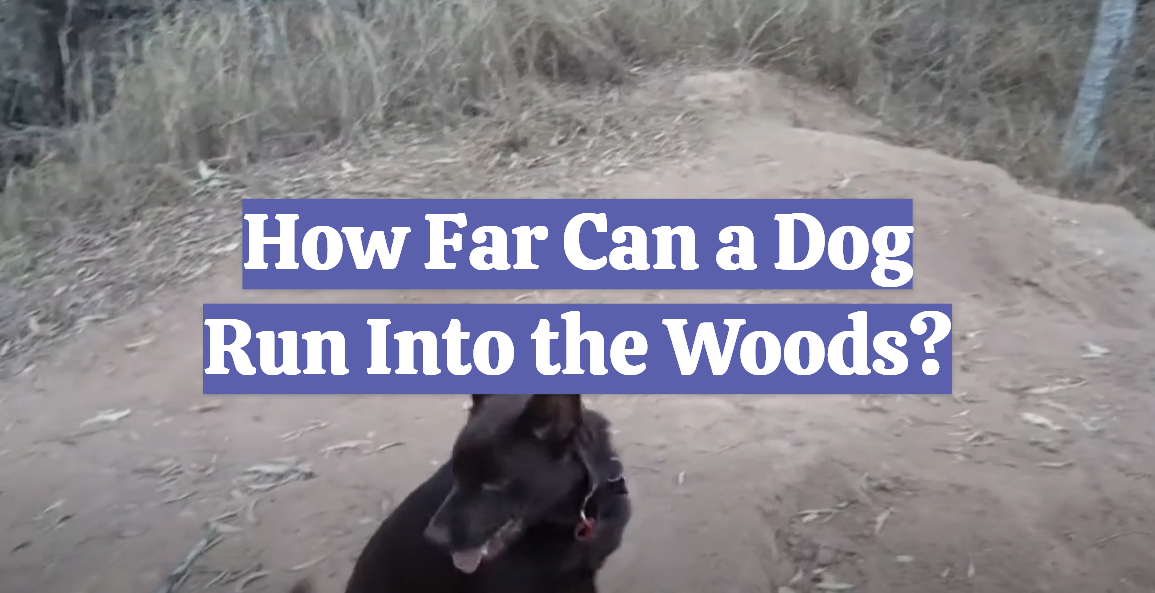




Leave a Reply